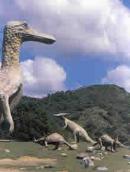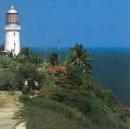Granma
History and nature are the terms that define Granma. Turquino and Sierra Maestra, Granma's natural parks are the birthplaces of the national rebelliousness where transcendental events took place aimed at achieving national freedom.
The Museum of the Rebel Army is operating at La Plata General Command Headquarters and the access to this heritage location is along a tourist road which joins the eastern Cuban provinces of Granma and Santiago de Cuba and was built among the mountains.
Turquino National Park has the three tallest elevations of Cuba: Suecia Peak, with 1,732 m over the sea level, Cuba Peak with 1,834 m and Turquino Peak with 1,974 m.
On the west of Sierra Maestra is the Turquino National Park, an extension of over 17,000 hectares, located on the west of the mountain range of Sierra Maestra, the mountain range which offers the most splendid visual panorama for its exuberant flora and fauna.
Sierra Maestra National Park extends over 25,000 hectares and is situated in the flattest areas of Las Coloradas beach and Cabo Cruz, at the end of the easternmost areas of Cuba. El Guafe eco-archeological trail is there located which preserves a number of caves, an aboriginal site and Atabey, the water idol.
Heading to Marea del Portillo in the midst of the mountains is Las Yaguas Fall, with elevations and slopes that reach 20 degrees of gradient. Granma preserves other attractions in its Cupaynicú Botanical Garden which comprises some 100 hectares where 256 species inhabit the place, surrounded by fruit and medicinal trees, it is the third largest botanical garden of Cuba, after those of Havana and Cienfuegos.
Delta del Cauto is the natural shelter of a great variety of birds: flamingos, ducks, and benecinas that live at will at the spacious area of the swamp, one of the natural more comprehensive landscapes of Cuba.


































































